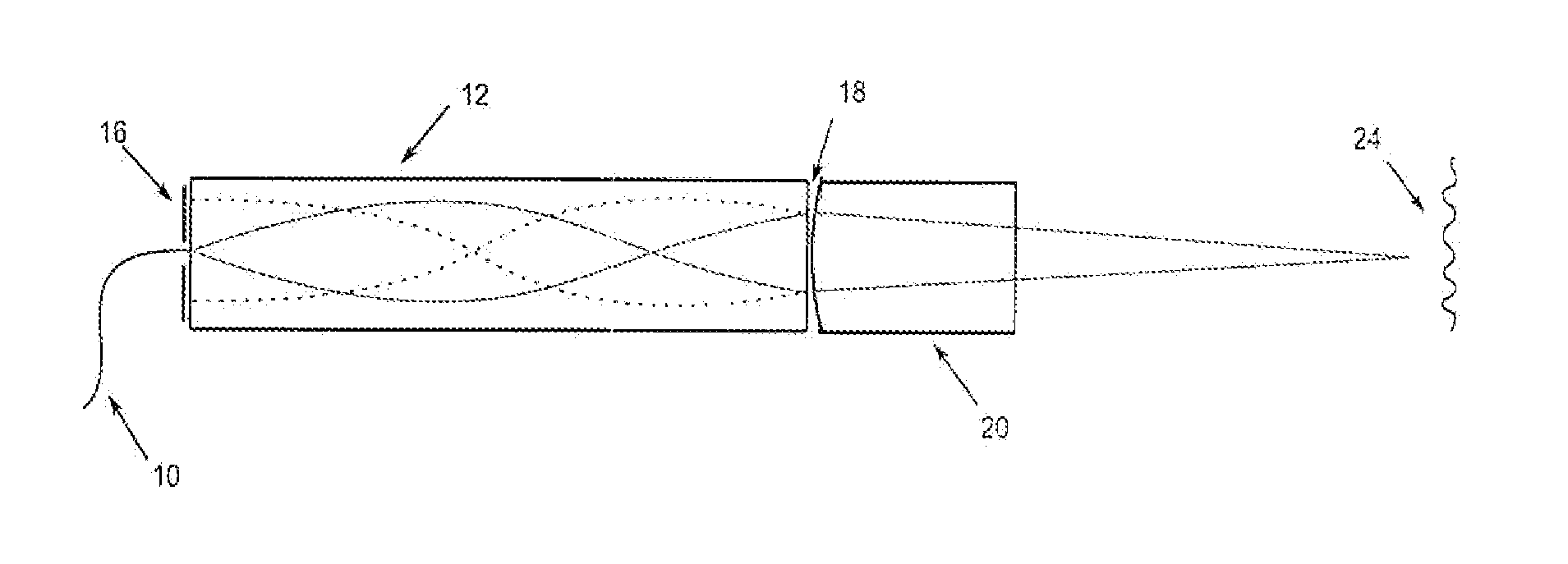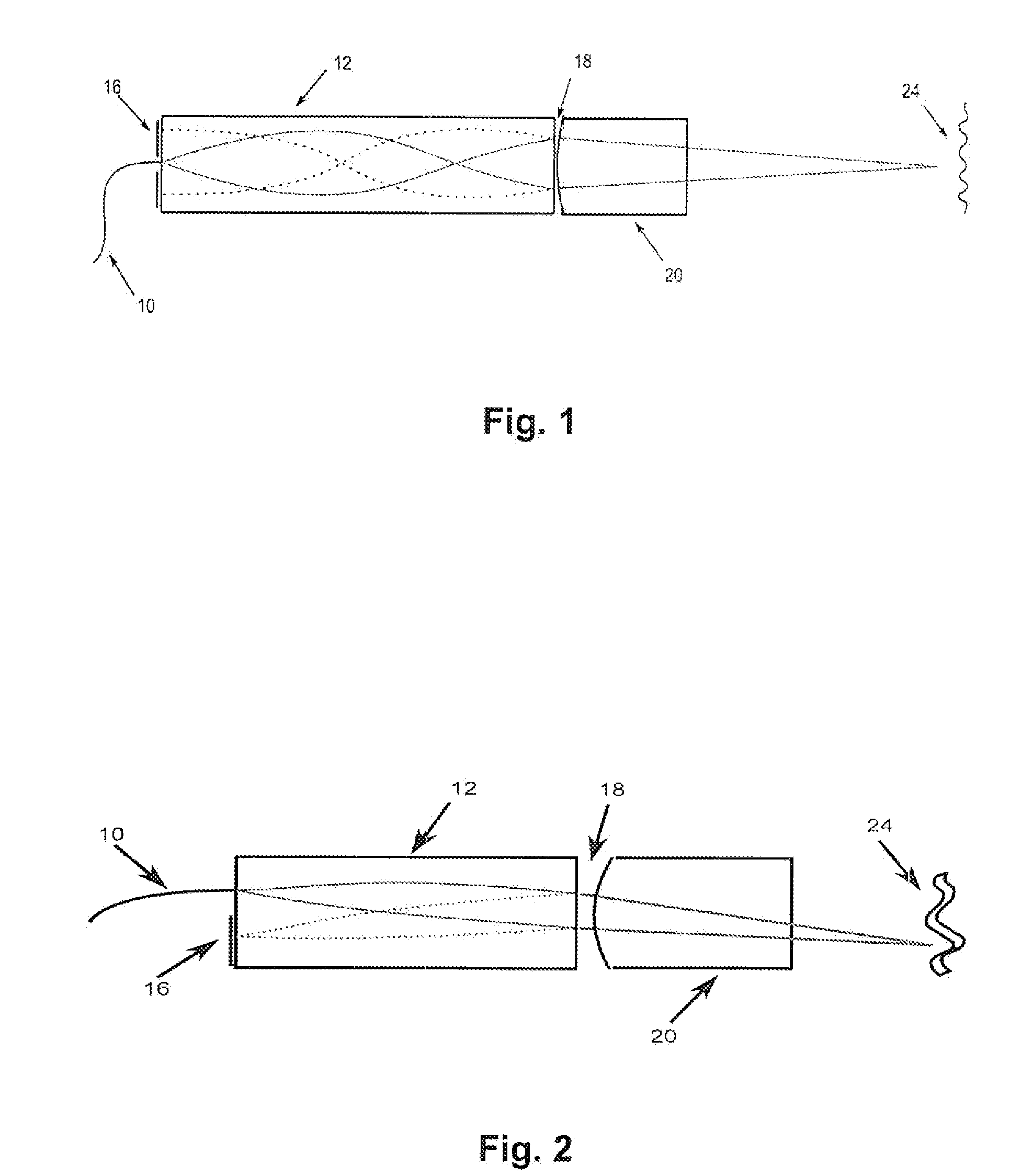Forward Scanning OCT Endoscope
a technology of optical coherence tomography and endoscope, which is applied in the direction of tomography diagnosis, sensors, diagnostics, etc., can solve the problems of affecting the accuracy of the detection results, the interference signal, and the difficulty in achieving the effect of achieving accurate detection results, and achieves compact and narrow design
- Summary
- Abstract
- Description
- Claims
- Application Information
AI Technical Summary
Benefits of technology
Problems solved by technology
Method used
Image
Examples
Embodiment Construction
[0031]The invention in principle takes advantage of the image-conducting attributes of GRIN optics so as to realize the reference branch using simple means. Here in principle two variations are possible, depending on whether an axially symmetric light-guiding arrangement is to be realized or not.
[0032]FIG. 1 represents the symmetric case. Here N has to be an odd number, for example N is set=5. The optical fiber 10 is connected (usually glued) to the inventive GRIN device 12 in such a way that the light leaves the fiber precisely at the center of the proximal flat side along the axis of symmetry of the GRIN device. The proximal flat side is completely mirrored with the exception of the surroundings of the fiber end, i. e. a highly reflective coating 16 that is interrupted at the center is applied to the proximal flat side. The continuous lines indicate the beam path of the light cone that starts from the fiber end and at first leads to the distal flat side of the GRIN device where th...
PUM
 Login to View More
Login to View More Abstract
Description
Claims
Application Information
 Login to View More
Login to View More - R&D
- Intellectual Property
- Life Sciences
- Materials
- Tech Scout
- Unparalleled Data Quality
- Higher Quality Content
- 60% Fewer Hallucinations
Browse by: Latest US Patents, China's latest patents, Technical Efficacy Thesaurus, Application Domain, Technology Topic, Popular Technical Reports.
© 2025 PatSnap. All rights reserved.Legal|Privacy policy|Modern Slavery Act Transparency Statement|Sitemap|About US| Contact US: help@patsnap.com


